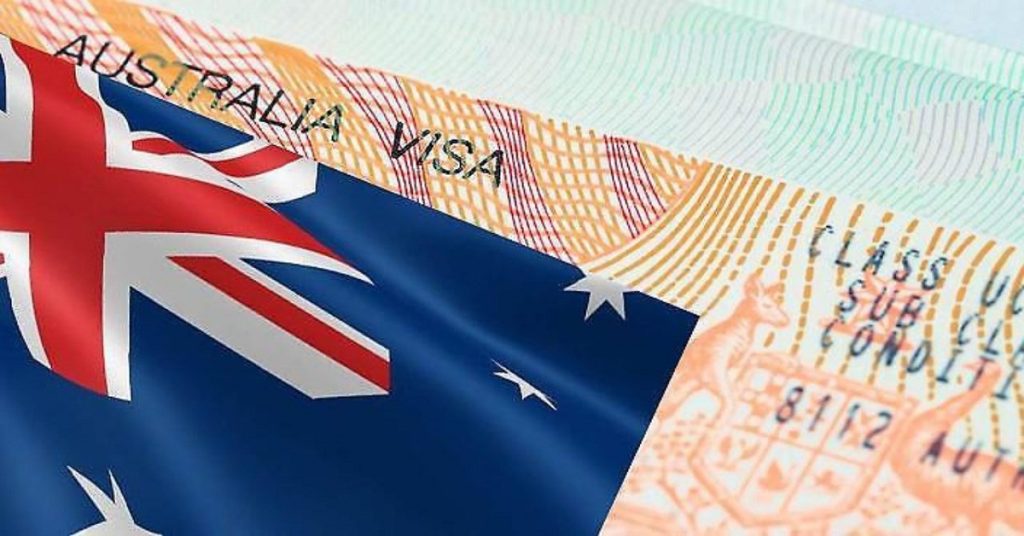Australia continues to be a top destination for skilled professionals looking to work abroad. Its stable economy, high quality of life, and demand for labor across various sectors make it an ideal choice. If you’re considering relocating for work, understanding how to apply for an Australian work visa is the first critical step.
In this post, you’ll get a clear, step-by-step process on how to apply for a work visa in Australia in 2025, including visa types, eligibility, requirements, and application links.
🛂 Step 1: Understand the Types of Australian Work Visas
There are several work visa options depending on your skills, occupation, and job offer. The most common ones include:
✅ Temporary Skill Shortage (TSS) Visa – Subclass 482
- For skilled workers nominated by an approved employer
- Allows stay of up to 2-4 years
- Requires skills assessment and sponsorship
More info: https://immi.homeaffairs.gov.au/visas/getting-a-visa/visa-listing/temporary-skill-shortage-482
✅ Skilled Independent Visa – Subclass 189
- Points-tested permanent visa
- No employer sponsorship needed
- For highly skilled professionals on the Medium and Long-term Strategic Skills List (MLTSSL)
More info: https://immi.homeaffairs.gov.au/visas/getting-a-visa/visa-listing/skilled-independent-189
✅ Skilled Nominated Visa – Subclass 190
- State-nominated permanent residency
- You must be nominated by a state or territory government
- Points-based system
More info: https://immi.homeaffairs.gov.au/visas/getting-a-visa/visa-listing/skilled-nominated-190
✅ Employer Nomination Scheme (ENS) – Subclass 186
- For skilled workers nominated by an Australian employer
- Permanent visa
- Requires at least 3 years of work experience
More info: https://immi.homeaffairs.gov.au/visas/getting-a-visa/visa-listing/employer-nomination-scheme-186
📋 Step 2: Check if Your Occupation is in Demand
Before applying, verify that your occupation is listed on one of the skill shortage lists:
- Medium and Long-term Strategic Skills List (MLTSSL)
- Short-term Skilled Occupation List (STSOL)
- Regional Occupation List (ROL)
Check here: https://immi.homeaffairs.gov.au/visas/working-in-australia/skill-occupation-list
🧾 Step 3: Check Eligibility and Points Score
For points-based visas (like Subclass 189 or 190), you must:
- Be under 45 years old
- Have competent English (IELTS 6 or equivalent)
- Score at least 65 points based on age, education, experience, language skills, and other criteria
Estimate your points here:
https://immi.homeaffairs.gov.au/help-support/tools/points-calculator
💼 Step 4: Secure a Job Offer or Nomination (if applicable)
For employer-sponsored visas (like Subclass 482 or 186), you need a job offer from an Australian employer who is an approved sponsor.
For state-nominated visas (Subclass 190), you must apply for nomination from a specific Australian state or territory.
📑 Step 5: Gather Required Documents
Common documents include:
- Valid passport
- English language test results (IELTS, TOEFL, PTE)
- Skills assessment (through approved authorities like ACS, ANMAC, Engineers Australia)
- Educational certificates and work references
- Health check and police clearance
🖥️ Step 6: Submit an Expression of Interest (EOI)
For points-tested visas (189 or 190), submit an Expression of Interest (EOI) through SkillSelect.
Apply here: https://immi.homeaffairs.gov.au/visas/working-in-australia/skillselect
Once invited, you can submit your visa application.
📝 Step 7: Apply for the Work Visa
Once eligible or nominated (depending on visa type), complete your application online via ImmiAccount:
Create or log in to ImmiAccount:
https://online.immi.gov.au/lusc/login
Pay the visa application fee (varies by subclass), upload documents, and submit.
⏳ Step 8: Wait for Processing
Processing times vary:
- Subclass 482: 2–6 months
- Subclass 189/190: 5–12 months
- Subclass 186: 6–9 months
During this time, you may be contacted for interviews, biometric data, or additional information.
✅ Step 9: Visa Approval & Relocation
If approved, you’ll receive a visa grant notice with entry dates and visa conditions.
You can now:
- Book your flight to Australia
- Prepare documents (e.g., vaccination, resume)
- Research housing and living costs
- Register with Medicare and TFN (Tax File Number) after arrival
Key Takeaways
- Choose the right visa: TSS, 189, 190, or ENS depending on your profile
- Confirm your job is on the skilled occupation list
- Secure a job offer or state nomination where required
- Prepare all required documents, including English tests and skills assessment
- Use SkillSelect and ImmiAccount for application processes
FAQs
Q1: Can I apply for a work visa without a job offer?
Yes, for Subclass 189 and 190. These are points-based permanent visas that do not require a job offer, though a nomination is needed for Subclass 190.
Q2: Do I need IELTS for an Australian work visa?
Yes, most visas require proof of English language proficiency unless you hold a passport from an exempt country (UK, US, Canada, Ireland, NZ).
Q3: Can I bring my family with me?
Yes, most Australian work visas allow you to include family members (spouse and dependent children) in your application.
Q4: Can I apply for permanent residency through a work visa?
Yes. Many temporary visas like Subclass 482 can lead to permanent residency through the Subclass 186 ENS visa after working for 3 years.
Conclusion
Applying for a work visa in Australia involves several steps, but with proper preparation and guidance, it becomes a smooth process. Choose the visa that suits your goals, gather the necessary documents, and apply via official channels. With high demand for skilled workers, 2025 could be your year to start a rewarding career in Australia.
Disclaimer
This post is for educational purposes only and subject to policy changes by the Australian Government. For more information on policies, please refer to our Privacy Policy, Disclaimer, and Terms of Use.



